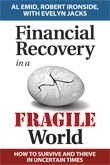Last updated: April 25 2012
Higher interest rates on the horizon?
After a long period of historically low interest rates, are rates soon to edge higher? In the wake of the Bank of Canada's setting of the overnight rate and releasing the April Monetary Policy Report (MPR), bank economists are speculating that rates are poised to increase later this year or early in 2013.
But, they maintain, any move will be gradual. The U.S. central bank, the Federal Reserve, has promised to hold firm on rates until 2014. Canada cannot get too far out of step with the U.S. without economic repercussions. TD Bank Group chief economist Craig Alexander contends the Bank of Canada cannot raise interest rates by more than one percentage point. Bank of Montreal economist Doug Porter puts the "maximum sustainable divergenceî between Canadian and U.S. rates at 200 basis points. Either way, it is a tight range.
"This argues for a step-wise tightening of monetary policy,î says Alexander in a report, "with periodic pauses to assess how the risks and economic environment are unfolding.î
Certainly, the April MPR paints a brighter economic picture than the January edition. Globally, the Bank of Canada notes, Europe is emerging from recession, probably in the second half of 2012, U.S. growth is "slightly strongerî than expected, and emerging economies are still showing robust if slower growth. In Canada, inflation is within the 2% target range, business investment has been solid and household spending continues to support the economy. As a result, the Bank has adjusted its growth projection slightly upward; it expects the economy to grow by 2.4% in both 2012 and 2013 before moderating to 2.2% in 2014.
"The degree of economic slack has been somewhat smaller than anticipated,î Bank of Canada Governor Mark Carney told the press conference when releasing the MPR, "and the economy is now expected to return to full capacity in the first half of 2013.î
This was followed by the remark that fuelled rate speculation: "In light of the reduced slack in the economy and firmer underlying inflation,î Carney said, "some modest withdrawal of the present considerable monetary policy stimulus may become appropriate, consistent with achieving the 2% inflation target over the medium term.î
But Carney left maneuvering room. "The timing and degree of any such withdrawal will be weighed carefully against domestic and global economic developments,î he added.
And, clearly, there are no guarantees it will be smooth sailing. The MPR lists three main upside risks to inflation in Canada:
ï persistently higher oil prices, which would fuel global inflation;
ï U.S. economic growth that outpaces expectations;
ï stronger-than-expected household expenditures in Canada.
The two main downside risks to inflation in Canada are:
ï the sovereign debt and banking crisis in the euro area, although improved, could re-escalate, affecting Canada through financial, confidence and trade channels;
ï high household debt levels in Canada could lead to a sharp deceleration in household spending, having a spillover effect on other areas of the economy.


